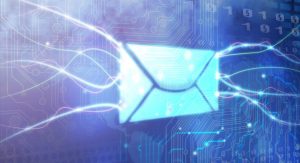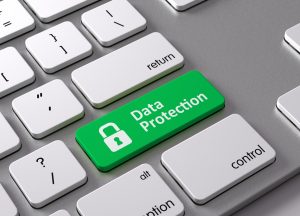The consequences of a ransomware attack can be exceptionally damaging to enterprises of all shapes and sizes. The data breaches involved in such assaults can lead to heavy costs, from expensive forensic investigations and company downtime to massive fines from data regulators and a long-term loss of reputation.
As with most forms of cyberattack, it is always better to take a preventative approach to dealing with ransomware raids, shoring up your system against potential threats rather than coping with a catastrophe afterwards.
Read on as we explore ransomware and explain some key protocols your company can deploy to keep its data safe from this prevalent problem.
What is a ransomware attack?
A type of crypto-malware, ransomware is malicious software capable of encrypting a company’s data files and network, blocking user access. Vital systems and data are then withheld to disrupt businesses, often accompanied by threats of private content being disclosed unless an extortion payment is made by the victim.
Today it is typical for ransomware gangs to not only encrypt data but steal it as well, exfiltrating with confidential material. Proof of theft typically takes the form of sensitive data excerpts displayed on hacker forums or websites run by the threat operators behind the attack.
Ransomware operators will usually leave a digital note after their attack with a request for payment in Bitcoin, Monero or another cryptocurrency, favoured for its lack of traceability by the authorities, and its property of being near impossible to recall.
What is the relationship between ransomware and phishing attacks?
Phishing emails are often used to deploy ransomware. Messages might seem to be from authentic senders but include malicious attachments or download links, which if triggered result in a ransomware payload being launched.
Emails may also include links to malicious websites that imitate trusted suppliers, government organisations and financial institutions. Just like the traps contained in phishing emails, these sites are also engineered to deploy ransomware or steal credentials that empower them with access to your key systems.
It is of critical importance that you create a security culture in your workplace, with staff well-aware and on the alert for both phishing and ransomware attacks. Personnel at all levels, from the front of the house to the executive level, should be trained how to spot phishing emails and texts, along with the correct line of reporting.
Often, upper management are prime targets of ransomware operators, as if fooled they can offer access to more sensitive network areas where more valuable information is stored. Conducting regular phishing tests can be an ideal way to assess the current levels of employee awareness and measure their improvements.
Why are backups essential to surviving a ransomware attack?
If ransomware operators lock your system admins out of your network, databases, and devices it can grind your company to a halt until you pay up. However, if you can restore all your operations from a fresh backup, you can take control and refuse any demand made.
For this reason, keeping to a rigid backup routine is absolutely critical. This way you can ensure a smooth return to operations with a minimum of disruption if you face a ransomware attack and avoid the expense of paying to reclaim your systems.
How can encryption software defend data against ransomware?
Employing an encryption solution to protect your private data files is perhaps the most efficient way of securing the information used, handled and stored by your company. Encryption software allows you to render all the data in your care from files on your server to email communication, making it entirely illegible to unauthorised parties. If a ransomware group manages to infiltrate your private network or gains access to your employee’s devices, they will not be able to read data that has been encrypted and will be unable to steal it and extort money from you for its safe return.
How can you stop ransomware being delivered and spreading across your network?
There are several methods at your disposal designed to reduce the chance of malicious material like ransomware reaching your company devices. A filter system can be adopted that only allows certain file types that your company would anticipate receiving. It is also possible to block specific websites that are well-known for their criminal connections and malicious intentions, omitting them from a whitelist of safe sites your staff are allowed to visit.
Monitoring the movement of data is also key, and actively inspecting what types of information are incoming or being accessed and transmitted. Digital signatures can be a powerful ally in controlling data flow around your company network and blocking the spread of malicious code.
Do you need next generation protection?
At Galaxkey, we have created a secure system that offers businesses a more formidable defence against attacks by cybercriminals like ransomware gangs. With zero back doors, our security solution has no vulnerabilities that can be exploited and has been designed with the weakest link in the chain in mind. Time and again, cybersecurity professionals will lament that it is the human element of any operation that leaves it exposed to attack rather than the technology being used.
That’s why no passwords can ever be stored on our system, leaving no room for human errors that render them exposed. Furthermore, unlike many unwieldy and overly complex encryption options, our solution is exceptionally user friendly, thus ensuring it is always implemented correctly. With just a drag and drop action, staff members can protect emails and data files with powerful encryption.
Boasting three-layer construction, our encryption is the recommended government standard and presents cybercriminals with a next-generation defence measure. Our system also offers additional information security from digital sign features that allow employees to track emails and shared data, and ensure content can only be viewed by approved entities with the appropriate permissions.
Get in touch with our expert team today to trial our secure system and see for yourself how it can protect your data from the risk of a ransomware attack.



